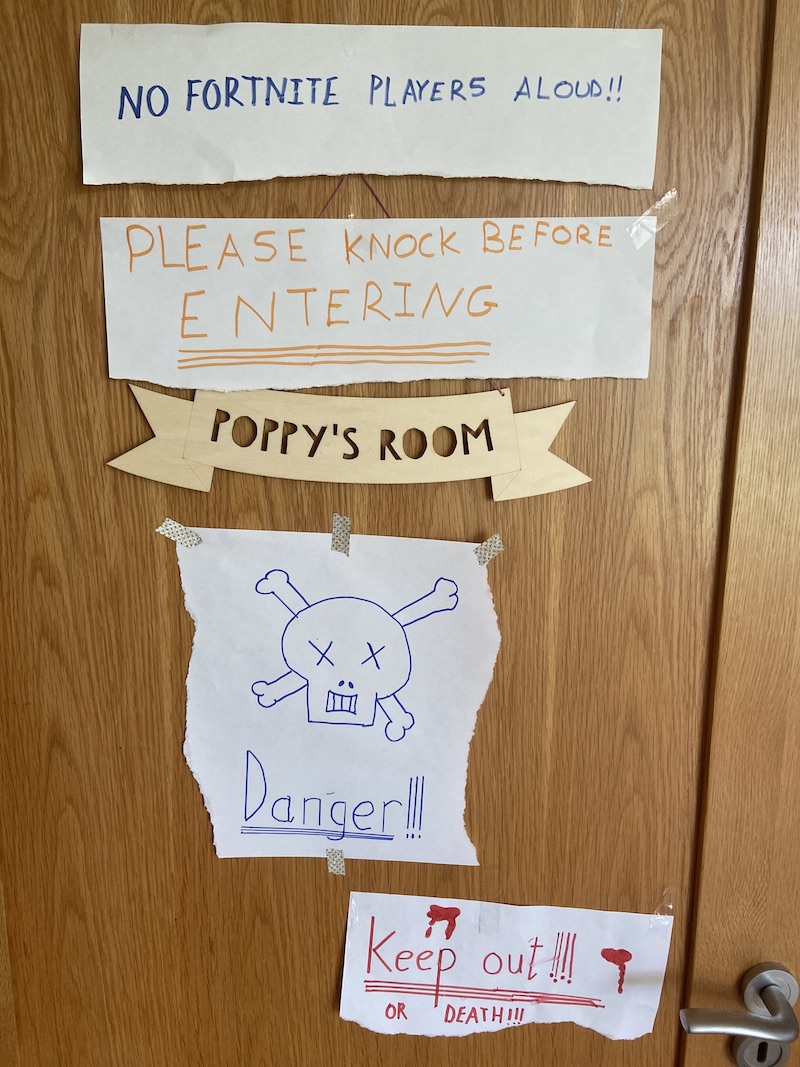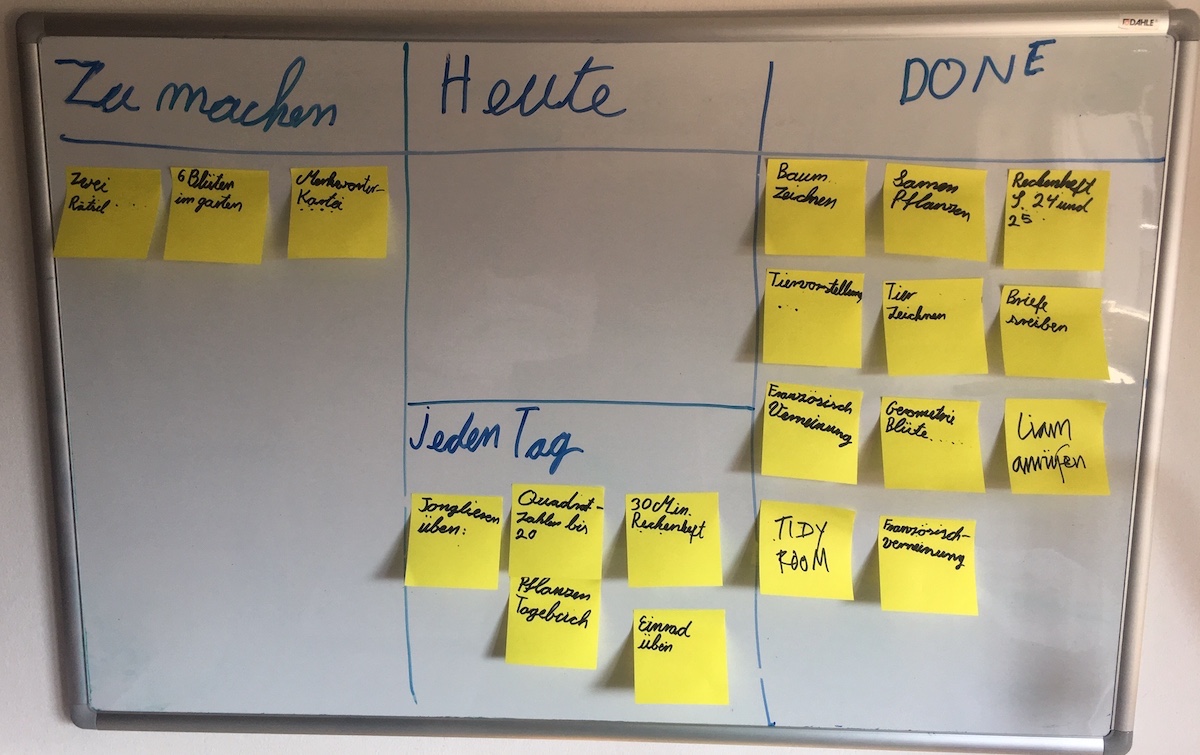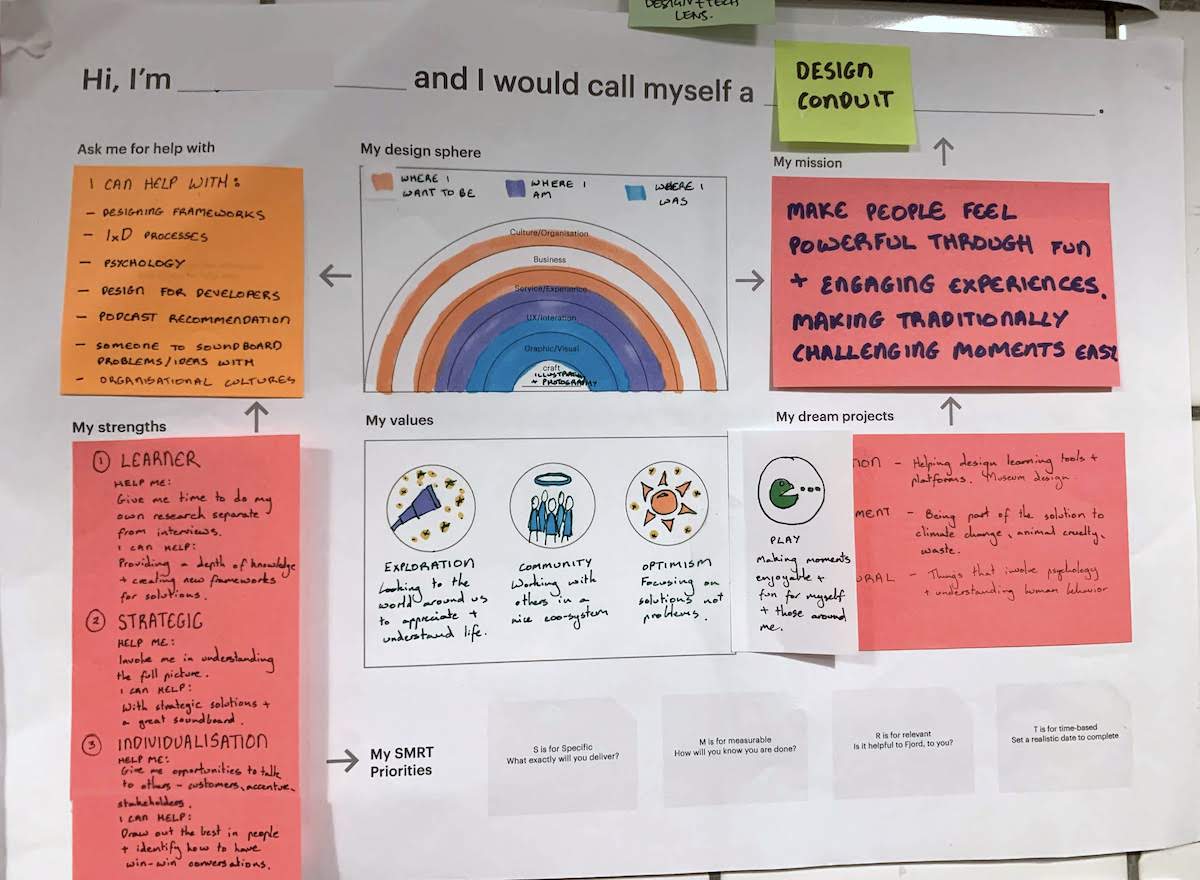A small group of people sharing a space for several weeks, all with different needs and preferences. Sound familiar right now?
While it’s true of families and shared accommodation, it’s also true of project teams. Typically, teams will spend many weeks or months together in the same room, usually under the pressure of deadlines and restrictions in what they’re able to do, be that due to the brief, budget, time, security, technology or politics.
There is a lot to be learned about managing and being part of project teams from the current situation and there’s a lot you can apply to family life based on your project team experiences.
We are family!

Family life isn’t all smiles
Are you? Teams and companies often express the idea that their company or studio is “like a second family.” But what does that actually mean and is it really true? Does it mean that you all get on fantastically all the time? That doesn’t really describe most families.
Does it mean that you’re there for each other through thick and thin, or does it really mean that you’re stuck with each other, whether you like it or not? (The title of Douglas Coupland’s All Families Are Psychotic has stuck in my mind ever since I read it).
You can leave a company or be fired. Families may throw a member out of the house or never speak to them again, but they’re still family in the way you’re not when you leave a company.
Families have very defined roles for each member that are built up over many years, through several life stages. The younger sibling remains the younger sibling and is identified as such in the family dynamic, despite their current age and maturity. Some parent-child power dynamics remain strong—and strongly dysfunctional—well into old-age. Sometimes it flips as the parent moves into aged-care and the child, now more than middle-aged, takes on the parent role in the classic Parent, Adult, Child triad.
In the workplace, unless it’s a family business, you can reinvent yourself from Junior to Senior by promotion or moving to another company. It’s not uncommon, however, for similar dynamics to play out in the workplace. A peer who feels they deserved the Senior Manager position constantly tries to pull you back down, for example.
Finally, there’s a crucial difference between families and companies. As Jungian psychoanalyst James Hollis writes in The Eden Project: In Search of the Magical Other when discussing Eros in the Organisation (by which he means the desire for connection, not simply the erotic):
“Most people experience their work environment as a society, not a community, and suffer from the difference.”
Communities are interdependent ecosystems whose participants serve and depend on each other. Companies allow and encourage the “projection of paternal authority,” as Hollis puts it. We are encouraged to love them, he argues, but they cannot love us back for they have no purpose beyond making products and services and they have no soul. It’s one of the reasons people are so shocked when they’re abruptly made redundant through restructures and “down-sizing” or in times of crisis. Psychologically, it feels like rejection by a parent.
We must be careful when we are tempted to conflate the families and the companies we work for. We risk sending the wrong signals and making emotional promised we not only can’t keep, but are destined to betray. This is especially in large organisations in which the personal connections between the employee and leadership are very thin or don’t exist at all. Teams can be communities without having to pretend to be families.
Negotiating boundaries

Poppy Veale (Aged 10) setting boundaries
In my conversation with Dr John Curran on The Big Remote we talked about how living in a confined space together for many more hours than normal means everything becomes a negotiation. If John wants to use the dining table to record a podcast, for example, he needs to negotiate that with his family. If his big, strapping, teenage son chugs a carton of milk as a mid-afternoon refreshment, that has consequences for the rest of the family if they can’t go shopping as often due to lockdown.
Most parents are keenly aware of those negotiations with their children and their partners. Hazel White told a story the other day about a woman sitting down at the kitchen table with her laptop opposite her husband who was already sitting there working. The husband looked up from his laptop and quipped, “I’m sorry, I’ve already got this meeting room booked.” It’s a classic tale of corporate life.
There are, however, some natural boundaries in family life. A common example is the teenager’s bedroom door that is closed is a clear signal for the rest of the family not to come in unannounced. Then there are clear boundaries of responsibility — parents for their children, for the household finances and food, perhaps. The teacher for the teaching and setting and correcting of homework. Those boundaries and roles are currently undergoing a lot* of renegotiation at present.
Rituals, structure and cadence

A schoolwork kanban
One of the biggest casualties of everyone being at home all the time is that the cadence of the days is out of whack. Families can learn about clearly defined cadences and boundaries from project teams in the workplace. For teams, rituals like morning stand-ups and start, stop, continue retrospectives help everyone check-in and give an opportunity to negotiate in a controlled, safe way, rather than side arguments.
I’m not suggesting that families structure or name them so formally (though I bet there are some doing Agile Self Isolation™), but taking the time to check in with each other intentionally is useful. Maybe the stand-up is a quick run through the everyone’s main blocks of time or key “do not disturb” times after breakfast. Maybe the “retro” happens during a walk around the block at the end of the day, if you’re still allowed to do that.
Conversely, project teams can learn from the implicit family behaviours and boundaries. You might not have a bedroom door to close if you’re in a project room together, but you can set up agreed modes of working. My ex-colleague Abigail Hatter from Fjord in Sydney brought over an excellent custom from Fjord London—Tiger Time and Lion Time. (If anyone knows the origin of this, please let me know!).
Tigers hunt alone, so that’s headphones on, deep-work time without talking or discussion. Lions hunt in packs, so that’s the time when the team are more social, discuss and collaborate. Tiger Time and Lion Time portions of the day are agreed in the morning stand-up.
As the Design Director, I’d clumsily walk into the project room when it suited me and start talking to someone, but the mention of it being Tiger Time sent me packing until it was Lion Time. It’s a metaphorical bedroom door for project team members and it empowered them to set a boundary for me that I respected.
On the home front, I noticed my daughter was starting to get overwhelmed by all the different schoolwork she needed to do. It was the amount itself that was a problem, but the stress of keeping track of it all. To-do lists can be stressful because they tickle your brain with all the uncompleted tasks.
I use a personal kanban on Trello to manage my own tasks. My eleven year-old daughter already had a magnetic whiteboard in her room, so we turned it into a schoolwork kanban. Now she gets to decide what piece of schoolwork she moves from her “backlog” (we didn’t call it that) into the day’s work. Plus she gets the feeling of satisfaction from all the things she’s completed in the growing “done” column. It seems to have worked quite well so far and relocates the focus from us telling her to do her schoolwork to the neutral kanban that she is in control of.
Transition states & goodbyes

Sometimes it’s hard to say goodbye
Some of the things that are missing when working with remote teams via Zoom are transition states and liminal spaces. If I’m facilitating a face-to-face workshop with breakout teams, I can hover on the edge of the discussion and break in when I can see their attention turn away from the discussion towards me. They know I’m there and, if they’re doing fine, they’ll often ignore me and I’ll move on. Either way, they know I’m checking and listening in as I move around the room.
In Zoom, moving between breakout rooms means just crashing into the middle of a room’s discussion without notice. There’s no sidling up to them, no knocking on the door. I’ve taken to sending a broadcast message saying “I’m dropping into the groups now” in advance. It’s like the “I’m coming!” in hide and seek. Another facilitator I know turns off their video so they don’t immediately bomb the group with their video presence and then turns it on after they have “arrived.”
I’ve long disliked and thought about the social awkwardness of ending video calls. Most people give a lame little hand wave before the clumsy moment of searching for the end call button. A psychologist I know suggested this is because it’s like just shutting the door in someone’s face. It feels too abrupt.
In real-life, the conversation finishes, you both turn side to side and either walk to the door before turning to say goodbye or give each other a kiss, hug or shake hands as a way of signalling the interaction is over. You might even say a final goodbye as you’re turning away.
I discovered a nice affordance the other day on a Zoom call. If you turn off the video before you end the call, it softens the blow. Some suggested on LinkedIn that this was because it feels more like hanging up a phone call. Others also mentioned that the host of a group call should wait until everyone else has hung up before ending the call, which also feels like a more human interaction. Most people don’t go to bed and leave the dinner-party guests to show themselves out. I still think the end of a videocall should be a Loony Toons style iris wipe.
Personal needs

Intentionally sharing personal needs & goals
Families, of course, generally grow up together and have a mental list of the likes, dislikes and foibles of their relatives. Sometimes these are used to nefariously push buttons, other times to avoid flammable subjects. We all have mental maps of the family minefields.
Having lived more of my adult life in a different country to my UK family, it’s always interesting to see how I’ve become frozen in time in the mind’s of my family there. When I visit, my mother will often buy in the foods that I used to like as a teenager, but are no longer (supposed to be) part of my diet. Sometimes that’s gorgeous comfort food, of course. I’m looking at you, Jaffa Cakes.
Team members need to explicitly state these needs to each other, since they may never have worked with each other before. These might be loves and hates, triggers, or what is important to their well-being, such as getting out of work in time to go to a yoga class, see their child before bedtime, or take the dog for a walk.
Professionally, it’s useful for them to state what they can help with, hidden talents, and what they’re not so interested in doing anymore. A classic way to get burned out is to always be given the jobs you’re known to be good at. This might sound counter-intuitive, but while you might be good at that role, it doesn’t always mean you want to do it for evermore.
You might even come to hate the thing you’re good at, especially if you just stepped in to do that role and got stuck in it. Someone else might love the chance to do it for the growth opportunity, but you won’t know unless you all explicitly have that conversation up front. Teams have to “grow up” together at accelerated pace, usually within a few days of a project kick-off. If they’re not intentional about their needs, things can quickly derail or implode.
In that sense, teams are a bit like families.
Most if the above will sound like common sense, because it is. Yet this sense is often discarded, due to the way we try to artificially separate our home “personality” from our work one. Now the two are blended due to remote working, we can see how artificial that separation truly is and bring our intentionality back into the relationships we have in both worlds.
—
This post is a portion of my newsletter Doctor’s Note. Sign up if you’d like to get articles like these earlier and in your inbox on a regular basis. And if you like that, you might like my podcast, Power of Ten.
Image credits: Upset girl: Ayo Ogunseinde | Poppy’s Room: Poppy Veale (Aged 10) | Embrace: Eye for Ebony | All others mine.


